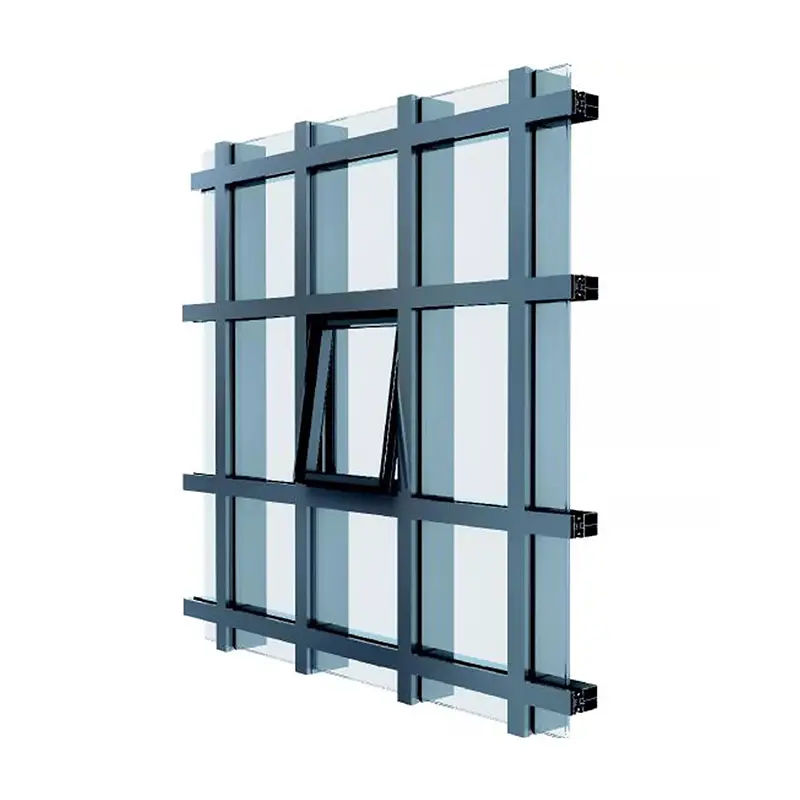The Stick Glass Curtain Wall
This is the earlier design of curtain wall technology. The wall is installed piece by piece. Usually, the mullion members (which is vertical member) are installed first, followed in turn by the transom members (which is horizontal rail member), and finally the glazing or window units. However, in designs accenting the horizontal lines the process may be altered to first install the larger transoms. In either case, the transom and mullion members are often long sections designed to either be interrupted or extended through at their intersections. The stick wall system was used extensively in the early years of metal curtain wall development, and is still widely used in greatly improved versions. Some contractors consider it to be superior to other systems. The characteristics of this system are its relatively low shipping and handling costs, because of minimal bulk, and the fact that it allows some degree of dimensional adjustment to site conditions. Its disadvantages are the necessity of assembly in the construction site, rather than under controlled factory conditions, and the fact that pre-glazing is obviously impossible. Framing Extrusions are commercially available so need to pay new die or profile. Most façade contractor is familiar with system. Suitable for storefronts and small areas. The stick system is the earlier design of curtain wall technology. The wall is installed piece by piece, with the mullion members (the vertical member) installed first, followed by the transom members (the horizontal rail member), and finally, the glazing or window units. However, it may alter the process first to install the larger transoms in designs accenting the horizontal lines. In either case, the transom and mullion members are often long sections designed to be interrupted or extended at their intersections.
The stick wall system was used extensively in the early- to mid-twentieth century for office buildings, banks, and other commercial structures. Its advantages include flexibility in design and the ability to accommodate changes during construction. However, the stick system has several disadvantages. It is more labor-intensive and thus more expensive than other curtain wall systems and more susceptible to wind and seismic loads. In addition, the joints between members are potential sources of water infiltration. The stick system is no longer the most popular choice for curtain wall construction, but it is still used in some circumstances. When a project requires a high degree of customization or the building's structure cannot support the weight of a more modern curtain wall system, the stick system may be the best option. The system is composed of framing commercially available extrusions, so there is no need to pay for a new die or profile. Most façade contractors are familiar with this system, which is suitable for storefronts and small areas. Its disadvantages are the necessity of assembly on the construction site rather than under controlled factory conditions, and pre-glazing is impossible. However, the system's relatively low shipping and handling costs, because of minimal bulk, and the fact that it allows some degree of dimensional adjustment to site conditions make it a popular choice for many projects.
















































































































